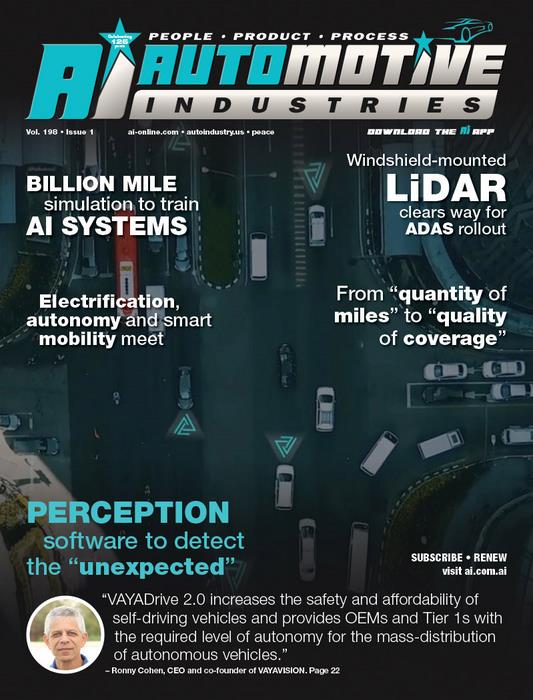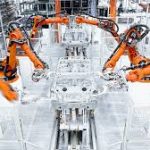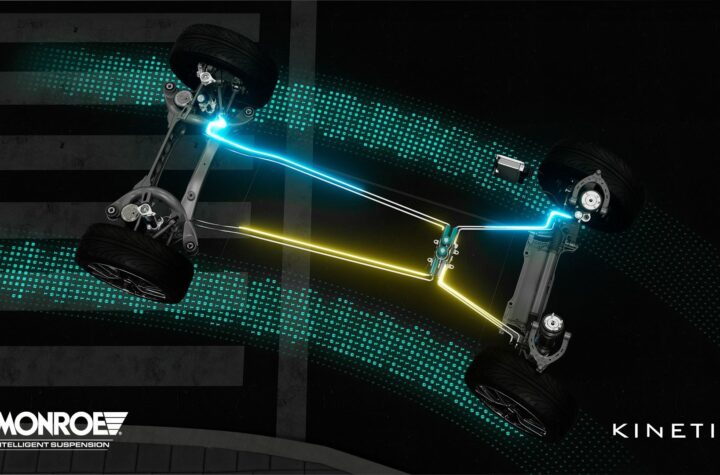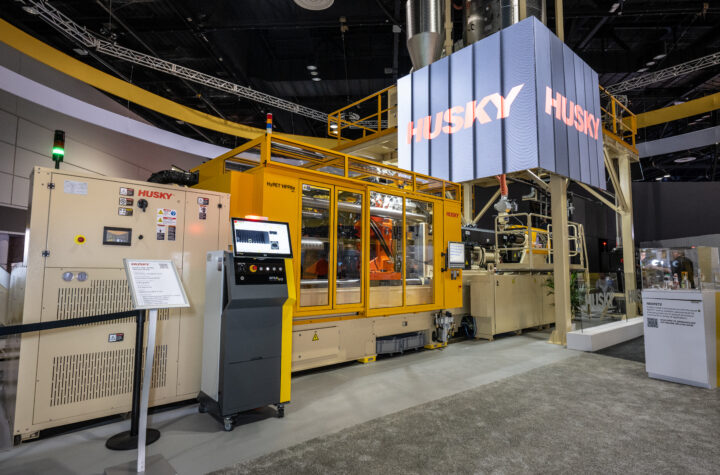This year started on a high note for luxury car maker Mercedes-Benz, which has announced it will be introducing an “uncrashable” car later in 2019.
The Australian edition of Motoring Magazine carried an interview with Mercedes-Benz global R&D chief, Ola Kalennius who spoke about the ESF or Experimental Safety Vehicle at CES 2019. The idea is that, since most car crashes are due to human error, then technology can take over and minimize or completely wipe out accidents. “Safety is the core DNA of Mercedes and the ultimate goal is zero accidents in traffic,” said Kalennius, in an interview with Motoring magazine. “Things like autonomous driving and sophisticated driver assistance are all enablers to reduce traffic accidents. Because virtually all traffic accidents are human error.”
Mercedes-Benz revived its safety program with the ESF 2009, which was the first experimental safety vehicle the company had built since 1974, when it produced over 30 experimental vehicles for research on future automotive safety systems. These prepared the ground for numerous innovations, some of which only reached series production maturity years later. They include ABS, belt tensioners and belt force limiters, airbag and side impact protection. The company said that, like its historic predecessors, the ESF 2009 combined “trailblazing” innovations in the field of safety that made the progress achieved visible.
Parent Daimler AG, gave the go-ahead for the ESF 2009 in October 2008, and the decision was received with great enthusiasm in the test workshop: “Making safety visible – I was quickly able to assemble a highly qualified team for this interesting project”, said Axel Wittig, the team leader for the entire workshop facility in a 2009 statement. “The complexity of this assignment was a welcome challenge, as we not only had to integrate the numerous innovations into an S400 Hybrid, but also make them fully functioning in demonstration mode and provide a look behind the technical scenes by incorporating eight inspection windows in the bonnet, bumpers and doors.”
Daimler says the prevention of death and injury in road accidents rose to prominence in the 1960s as the global car parc grew. In 1968 the US Department of Transport started a program for the development of Experimental Safety Vehicles (ESVs), and initiated the international “Technical Conference on the Enhanced Safety of Vehicles”. In 1970 the first requirements to be met by ESVs were defined. These included an extremely demanding frontal and rear-end impact against a rigid barrier at 80 km/h, and a side impact against a mast at 20 km/h. The test vehicles also had to withstand minor accidents at 16 km/h without lasting deformations at the front and rear. It was also believed that American consumers would not accept having to actively put on and fasten a seat belt. Therefore, automatic belt systems were envisaged which would envelop the front occupants when the doors were closed. The American government also issued an invitation to foreign countries to take part in this safety research. In 1970 this gave rise to the still active European Enhanced Vehicle Safety Committee (EEVC).
Mercedes-Benz accepted the challenge of designing safer vehicles with great enthusiasm. After all, the company was already able to look back on more than 20 years of continual safety research at the time. And about 10 years previously, in 1959, the fundamental basis for all future safety developments had already entered series production at Daimler-Benz: the safety bodyshell with impact energy absorbing crumple zones at the front and rear, and a rigid passenger compartment between them.
The complexity of the ESF 2009 project, which involved the integration of 13 safety innovations into the hybrid version of the S-Class that only existed as a prototype when the work started, was reflected in the fact that a completely new wiring harness had to be designed. At the heart of the demonstration technology was a compressed air tank in the boot, with a compressor and external power supply, which charged the airbags and the air chambers for the PRE-SAFE Pulse and Interseat Protection systems. The finishing touch for the ESF 2009 is a central remote-control system for all the functioning demonstrations.
By 2016, the E-Class had incorporated major advances in safety and technology arising out of the project. “The new DRIVE PILOT, for instance, offers semi-autonomous functions such as following vehicles at up to 210 km/h, steering or braking when necessary and changing lanes on the autobahn. In addition, the new E-Class is the world’s first series produced vehicle to be awarded a test license for autonomous driving in the US state of Nevada. This was achieved by simply modifying the vehicle software, while the standard hardware remained unchanged,” said Thomas Weber Member of the Board of Management of Daimler Group Research and Mercedes-Benz Cars Development, in a 2016 interview to AI.
This year, the ESF is expected to be based on the S-Class, according to media reports. “A car that doesn’t crash is a worthy goal, but not impossible – it just takes effort to reach that point,” says Sandeep Sovani, Global Director, Automotive Industry at Michigan-based ANSYS. “Once autonomous vehicles are sophisticated enough, they won’t be 100% safe, but the risk of crashes will be so minor that people won’t even think about them when travelling.
Autonomous vehicles use sensors, such as radar, as their ‘eyes’ on the road – around 20 on average – and can be capable of vehicle-to-vehicle communication in order to avoid collisions. While humans can drive with two sensors – their eyes – autonomous vehicles require a lot more because they lack the computing capacity of the average human brain. Not only that, but the artificial intelligence that operates the car needs to be able to understand and make decisions within microseconds based on the sensors’ inputs. Autonomous vehicles can’t drive as well as humans can right now, but they will in the future once the artificial intelligence in the vehicle is smart enough after a lot of training and testing.
“To guarantee a safe vehicle and train the artificial intelligence to the right standard, it is estimated that at least nine billion kilometers need to be driven in the car. This is, of course, not feasible in practice, so manufacturers need to look to other solutions like simulation. Rather than carrying out extensive road-testing, companies can use simulation to train and evolve vehicle sensor technology and the vehicle’s AI, continually improving its response to ambiguous situations before real-world testing happens. In a simulation, cars can fail and learn from the mistakes without the risk of people getting hurt,” points out Sovani.
“For us, autonomous driving is not a question of ‘if’, but ‘when’. We expect that it will be possible to realize the first highly automated driving systems in just a few years on certain types of roads, such as autobahns, and in suitable weather conditions,” said Michael Hafner, Director Active Safety, Daimler in a 2016 interview with AI.
He added “we have already installed a wide array of partially autonomous driving functions in our core model ranges like C, CLS and S-Class. In the new E-Class we even go one step further with our new DRIVE PILOT and Remote Parking Pilot. On the one hand the sensors and their ability to identify complex situations need to be improved further. On the other, the ability of the system intelligence to carry out instantaneous and reliable evaluation of the data followed by appropriate decision-making is increasing. With all these developments we can envisage an extension of the assistance functions provided in a lot of situations. Our objective is to relieve the burden on drivers of monotonous driving tasks and highly complex driving situations. Safety – of our customers and all other road users – has top priority”.
Indeed, safety is non-negotiable on the road, especially when you’re behind the wheel. Both drivers and pedestrians are responsible for upholding road regulations at all times. However, mishaps are bound to happen when either party makes an error in judgment. That is when a car accident lawyer may be needed to help the affected party get their due. Hopefully, car safety developments in the automobile industry can help minimize the prevalence of road mishaps.














































 Universal Robots Adds SMC Corporation as UR+ Partner and Certifies New Grippers for COBOTS
Universal Robots Adds SMC Corporation as UR+ Partner and Certifies New Grippers for COBOTS Geotab Announces Agreement to Acquire BSM Technologies
Geotab Announces Agreement to Acquire BSM Technologies KUKA Showcases Human-Robot Collaboration at Automate Chicago
KUKA Showcases Human-Robot Collaboration at Automate Chicago Adding intelligence to voice data
Adding intelligence to voice data Where electrification, autonomy and smart mobility intersect
Where electrification, autonomy and smart mobility intersect New products reduce paint shop costs
New products reduce paint shop costs



